Charles E W Bean, Diaries, AWM38 3DRL 606/38A/1 - 1915 - Part 4
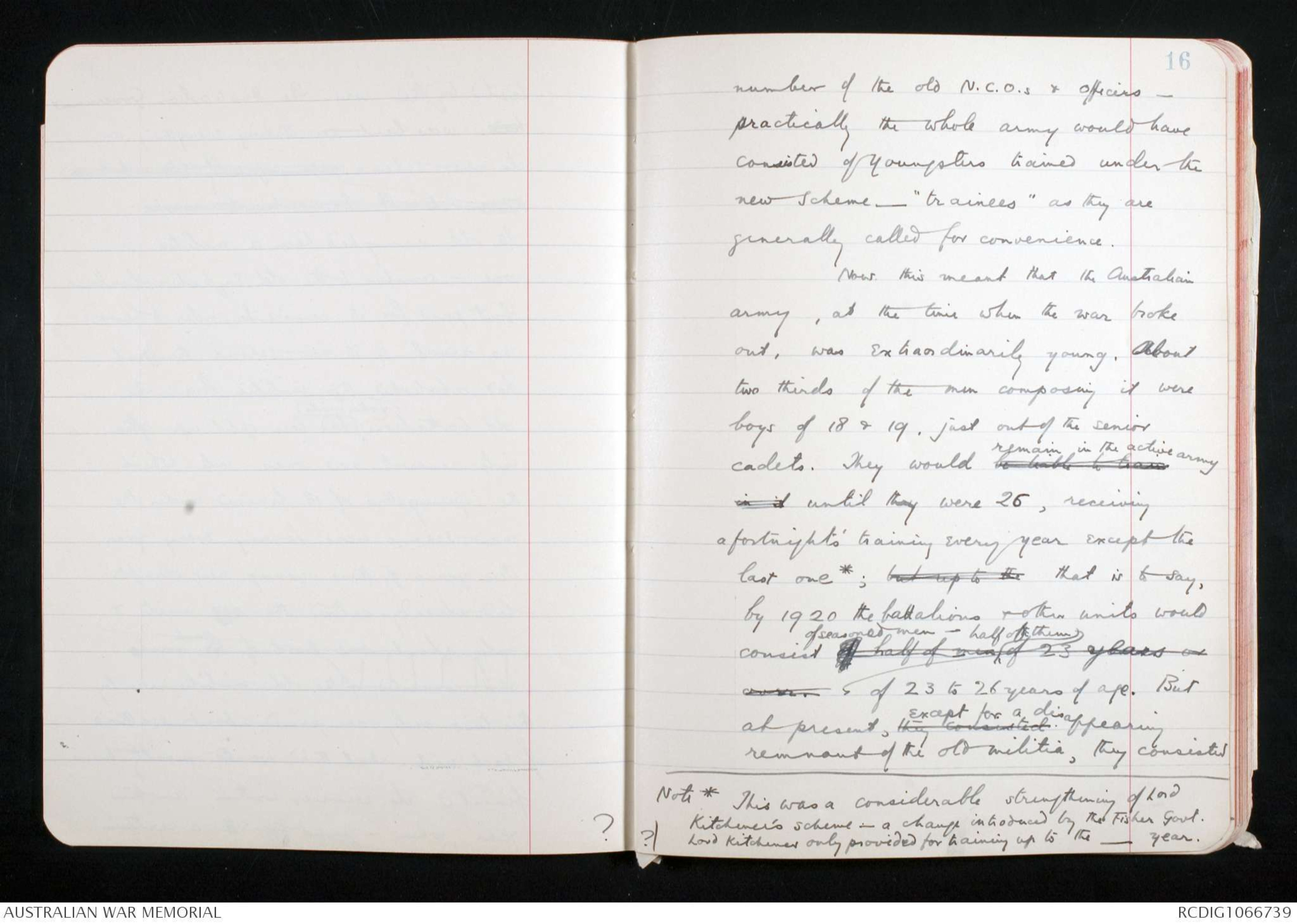
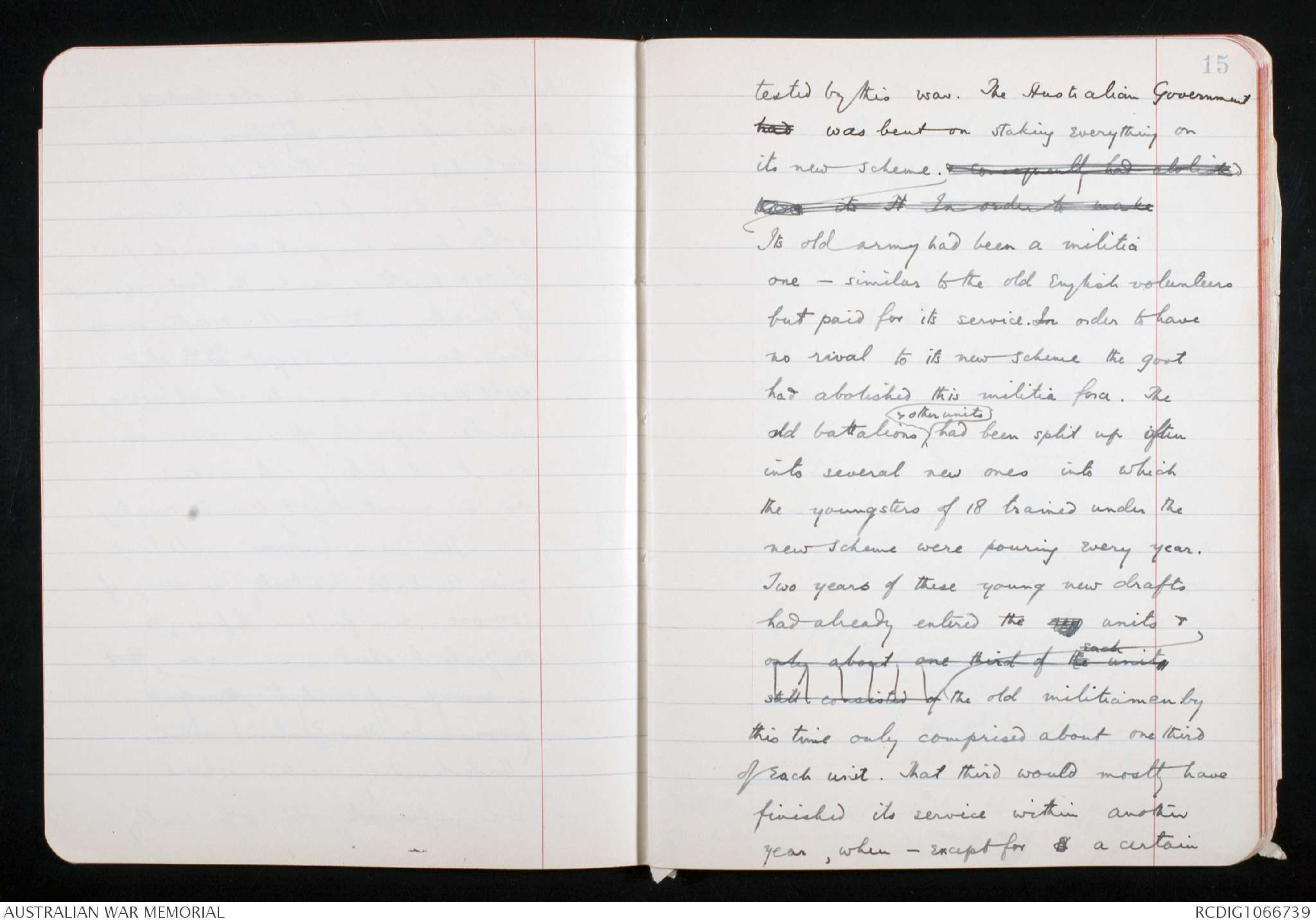
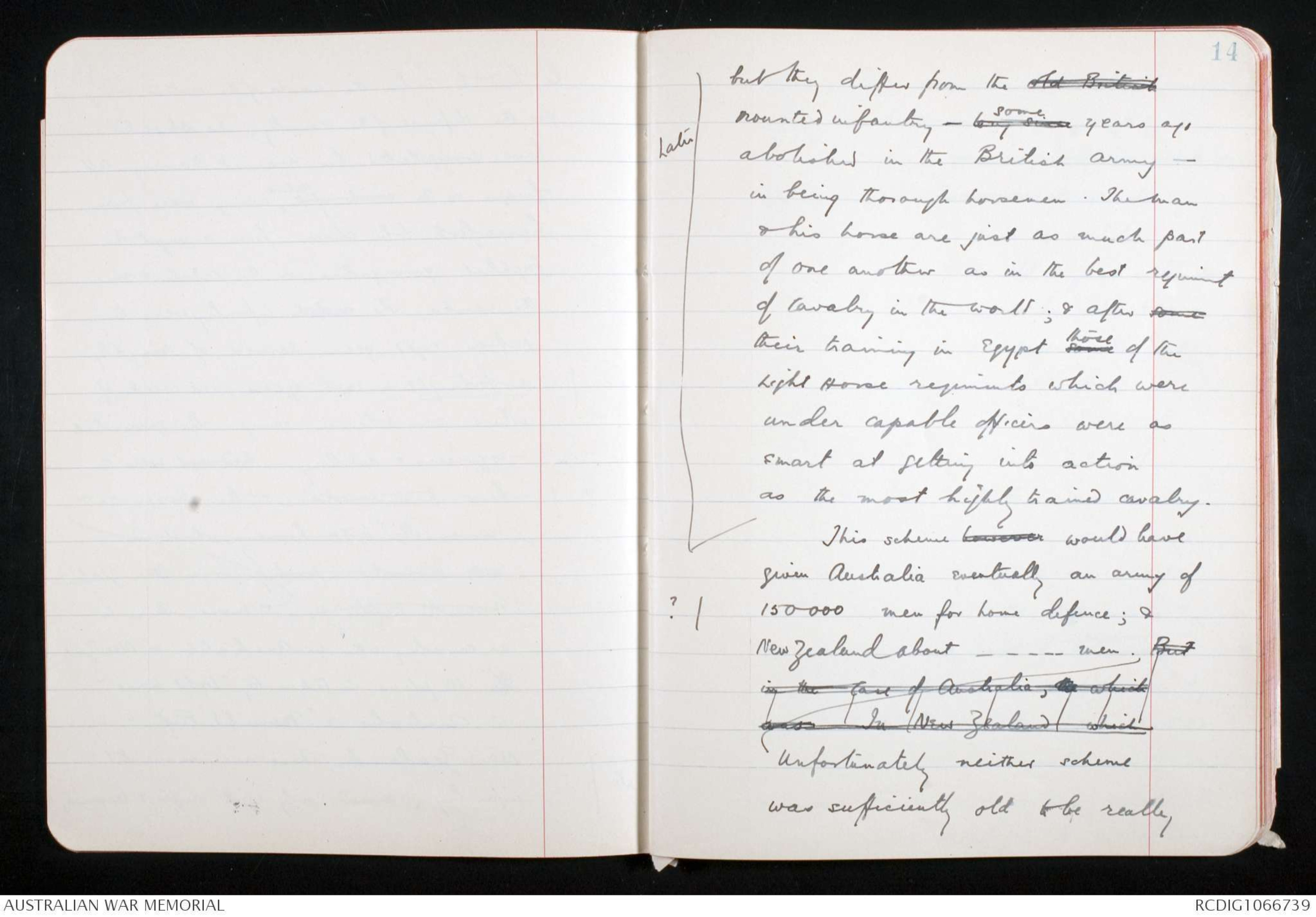
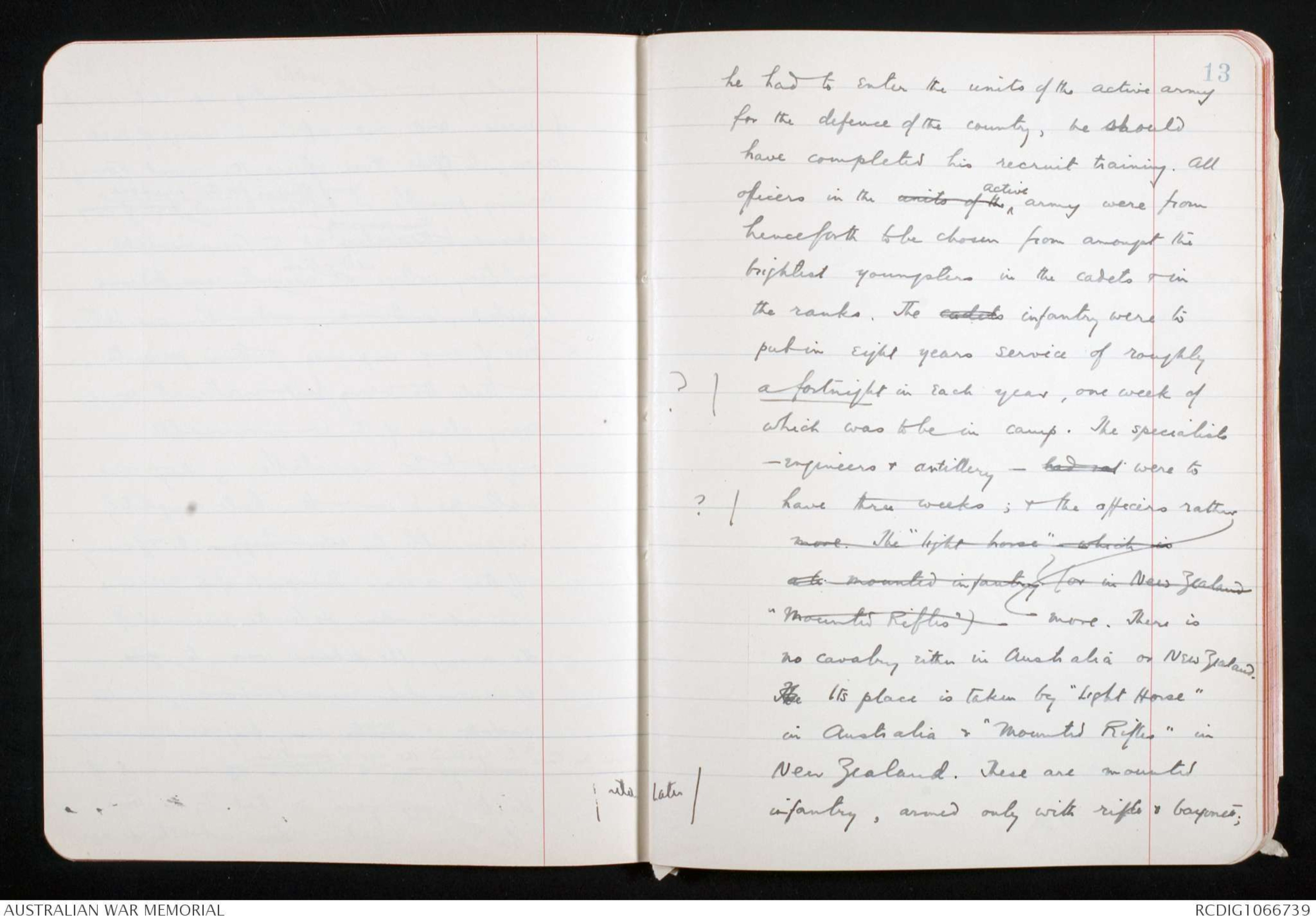
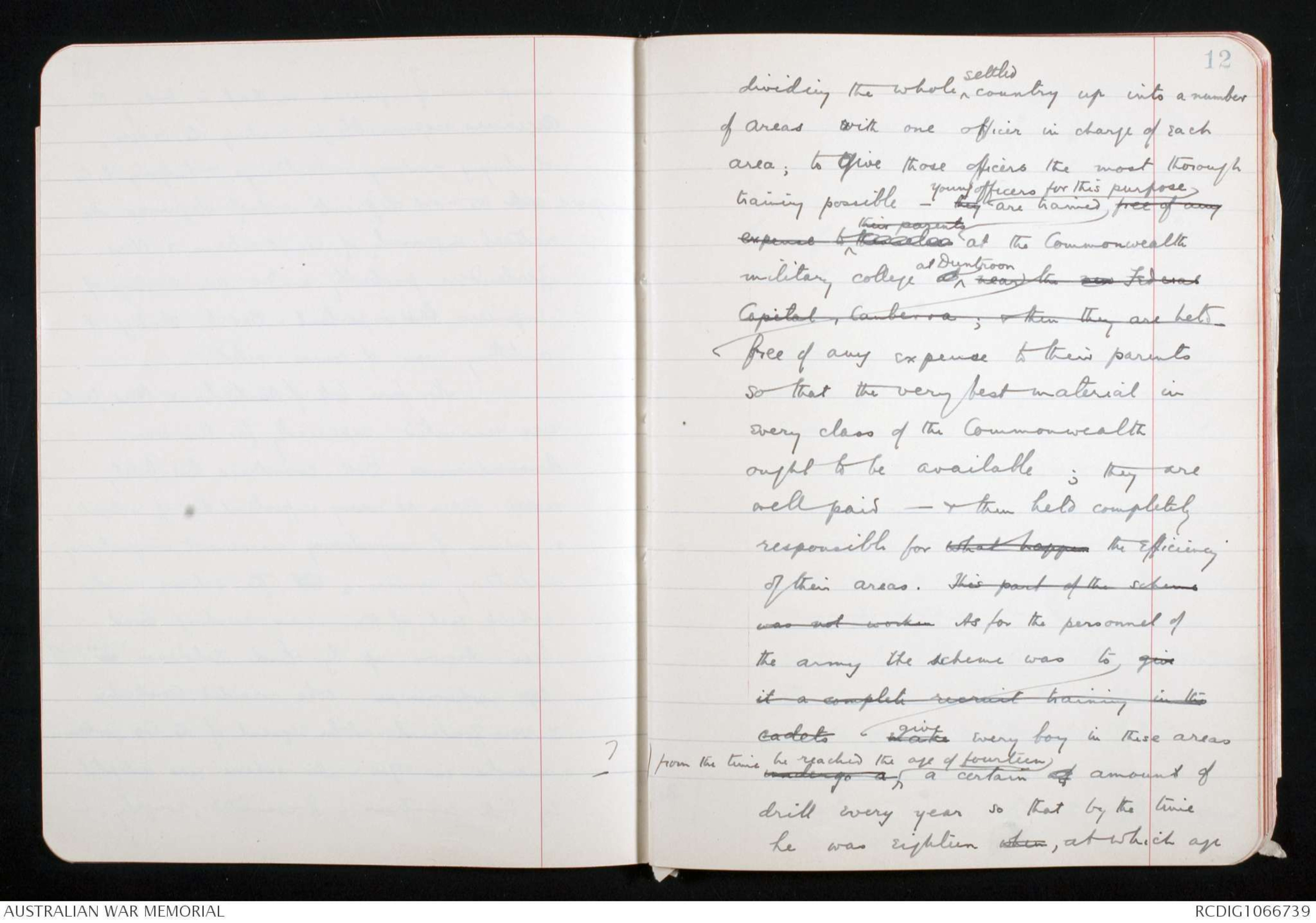
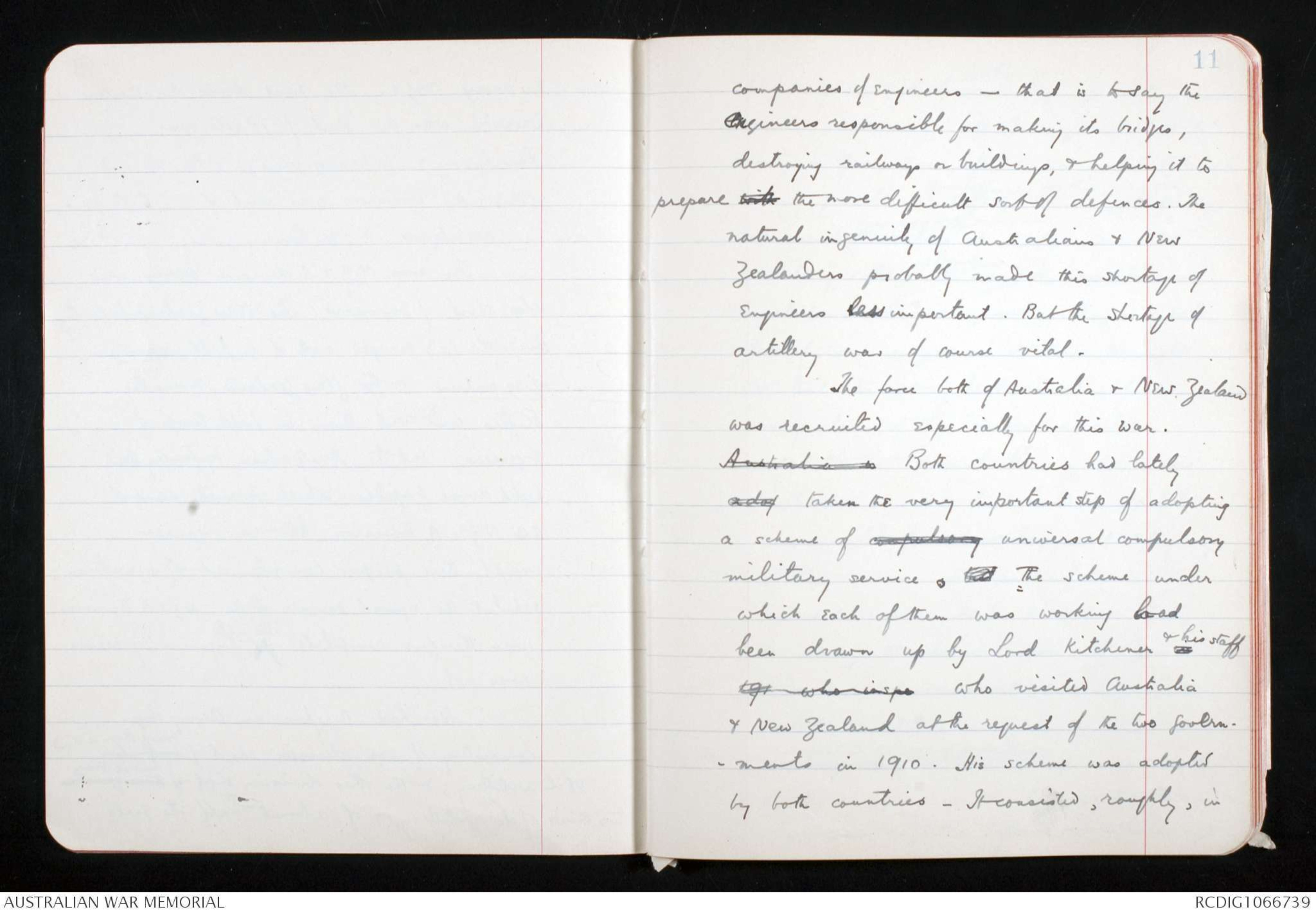
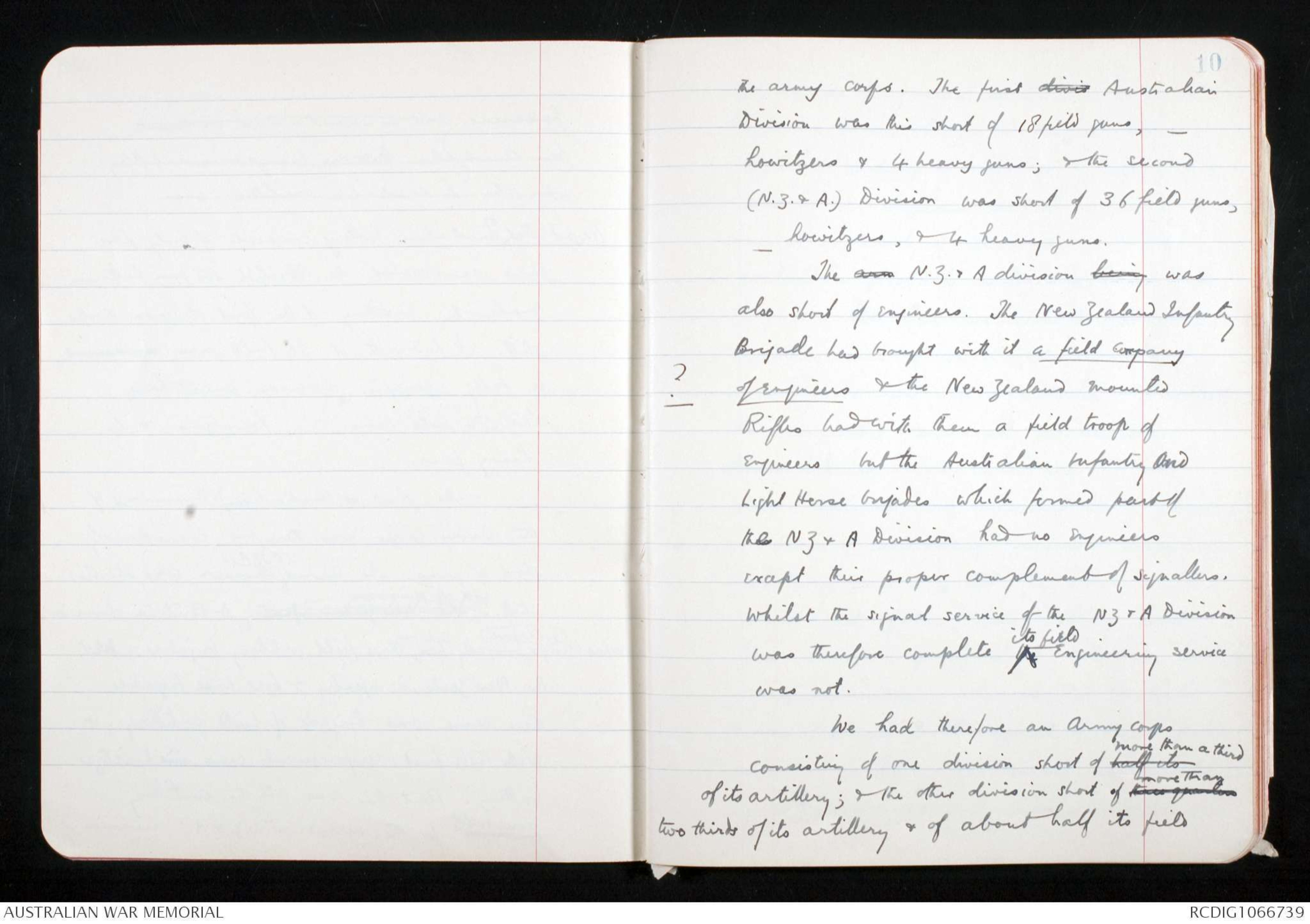
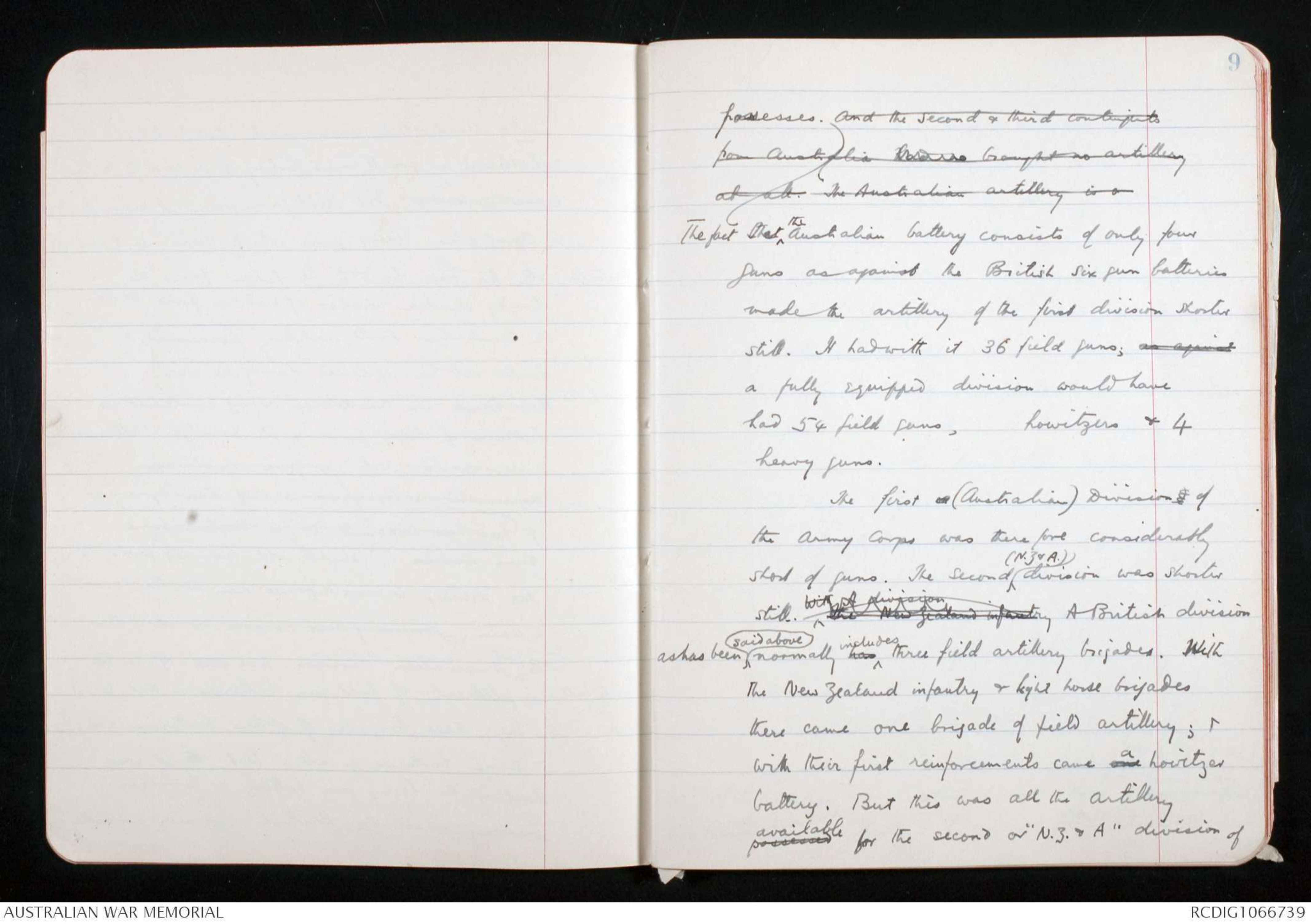
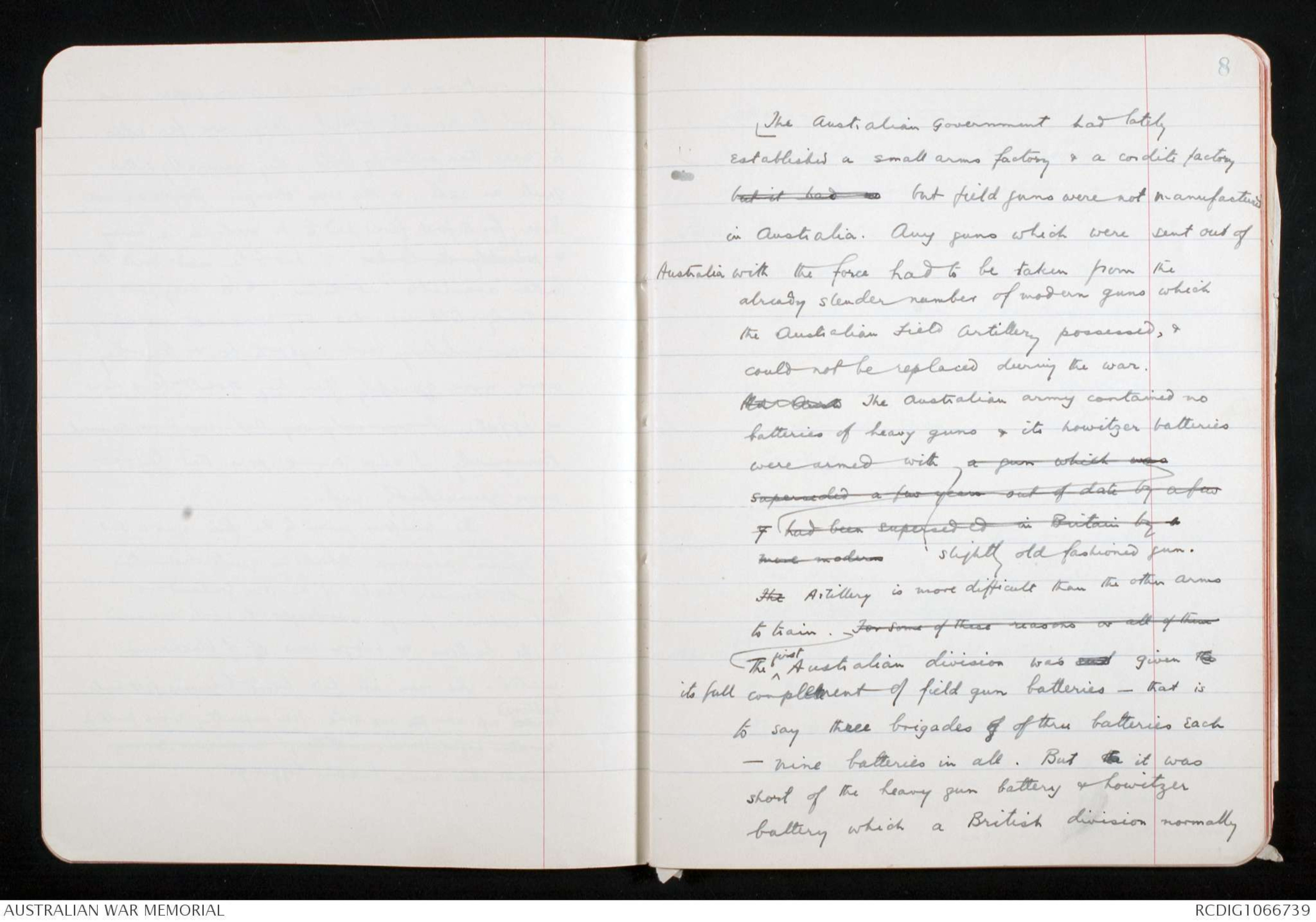
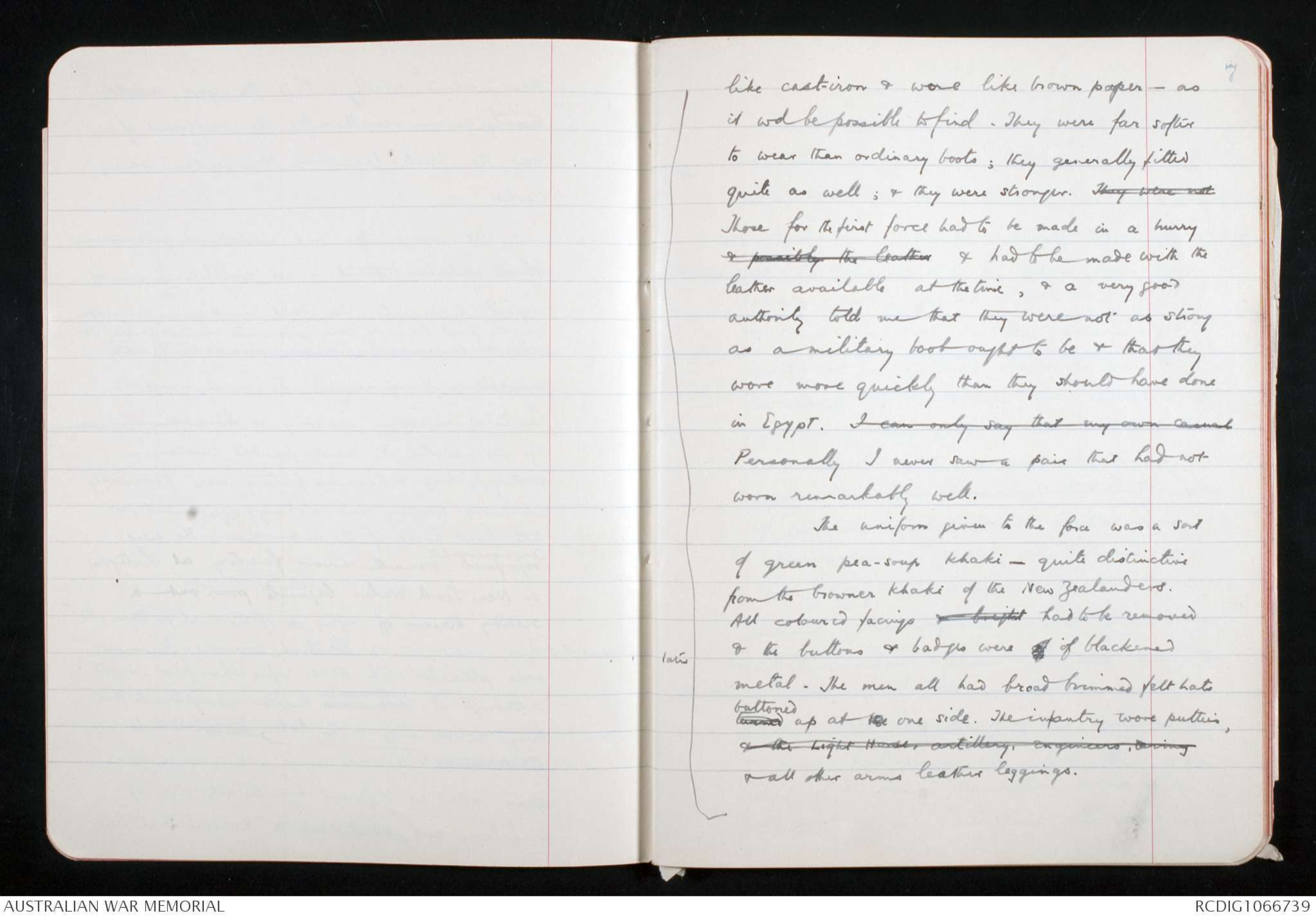
16
number of the old N.C.O.s & officers -
practically the whole army would have
consisted of youngsters trained under the
new scheme - "trainees" as they are
generally called for convenience.
Now this meant that the Australian
army, at the time when the war broke
out, was extraordinarily young, About
two thirds of the men composing it were
boys of 18 & 19, just out of the senior
cadets. They would be liable to train remain in the active armyin it until they were 26, receiving
a fortnight's training every year except the
last one * ; but up to the that is to say,
by 1920 the battalions & other units would
consist abt half of men of 23 years or over
^of seasoned men - half of them
of 23 to 26 years of age. But
at present, they consisted except for a disappearing
remnant of the old militia, they consisted
Note * This was a considerable strengthening of Lord
Kitchener's scheme - a change introduced by the Fisher Govt.
Lord Kitchener only provided for training up to the __ year.
[*??*]
15
tested by this war. The Australian Governmenthad was bent on staking everything on
its new scheme. & consequently had abolishedxxxxx its FI. In order to make
Its old army had been a militia
one - similar to the old English volunteers
but paid for its service. In order to have
no rival to its new scheme the Govt
had abolished this militia force. The
old battalions ∧& other units had been split up often
into several new ones into which
the youngsters of 18 trained under the
new scheme were pouring every year.
Two years of these young new drafts
had already entered the reg units &only about one third of the each unitstill consisted of the old militiamen by
this time only comprised about one third
of each unit. That third would mostly have
finished its service within another
year, when - except for xx a certain
14
[*Later*]
but they differ from the old British
mounted infantry - long since some years ago
abolished in the British army -
in being thorough horsemen. The man
& his horse are just as much part
of one another as in the best regiment
of cavalry in the world; & after some
their training in Egypt some those of the
Light Horse regiments which were
under capable officers were as
smart at getting into action
as the most highly trained cavalry.
This scheme however would have
given Australia eventually an army of
[*?*] 150 000 men for home defence; &
New Zealand about _________ men. Butin the case of Australia, xxx whichwas. In New Zealand which
Unfortunately neither scheme
was sufficiently old to be really
13
he had to enter the units of the active army
for the defence of the country, he should
have completed his recruit training. All
officers in the units of the ^active army were from
henceforth to be chosen from amongst the
brightest youngsters in the cadets & in
the ranks. The cadets infantry were to
put in eight years service of roughly
[*?*] a fortnight in each year, one week of
which was to be in camp. The specialists
- engineers & artillery - had not were to
[*?*] have three weeks; & the officers rathermore. The "light horse" - which isa to mounted infantry [or in New Zealand"Mounted Rifles") more. There is
no cavalry either in Australia or New Zealand.The Its place is taken by "Light Horse"
in Australia & "Mounted Rifles" in
New Zealand. These are mounted
infantry, armed only with rifle & bayonet;
[*Later*]
12
dividing the whole ∧settled, country up into a number
of areas with one officer in charge of each
area; to give those officers the most thorough
training possible – they young officers for this purpose are trained free of anyexpense to ∧their parents themselves at the Commonwealth
military college at ∧at Duntroon near the new Federal Capital, Canberra, & then they are held
free of any expense to their parents
so that the very best material in
every class of the Commonwealth
ought to be available; they are
well paid - & then held completely
responsible for what happens the efficiency
of their areas. This part of the schemewas not workin. As for the personnel of
the army the scheme was to giveit a complete recruit training in thecadets - make give every boy in these areas
{*?*] undergo a ^from the time he reached the age of fourteen a certain of amount of
drill every year so that by the time
he was eighteen when, at which age
11
companies of engineers - that is to say the
engineers responsible for making its bridges,
destroying railways or buildings, & helping it to
prepare with the more difficult sort of defences. The
natural ingenuity of Australians & New
Zealanders probably made this shortage of
engineers less important. But the shortage of
artillery was of course vital.
The force both of Australia & New Zealand
was recruited especially for this war.Australia is Both countries had latelyadop taken the very important step of adopting
a scheme of compulsory universal compulsory
military service. but The scheme under
which each of them was working had
been drawn up by Lord Kitchener who & his staffL9I who inspe who visited Australia
& New Zealand at the request of the two
Governments in 1910. His scheme was adopted
by both countries - It consisted, roughly, in
10
the army corps. The first divis Australian
Division was this short of 18 field guns, __
howitzers & 4 heavy guns; & the second
(N.Z. & A.) Division was short of 36 field guns,
__ howitzers, & 4 heavy guns.
The arm N.Z. & A division being was
also short of engineers. The New Zealand Infantry
Brigade had brought with it a field company
[*?*] of engineers & the New Zealand Mounted
Rifles had with them a field troop of
engineers but the Australian infantry and
Light Horse brigades which formed part of
the NZ & A Division had no engineers
except their proper complement of signallers.
Whilst the signal service of the NZ & A Division
was therefore complete the ∧its field engineering service
was not.
We had therefore an Army Corps
consisting of one division short of half its more than a third
of its artillery; & the other division short of three quarters more than
two thirds of its artitlery & of about half its field
9
possesses. And the second & third contingentsfrom Australia xxxxx brought no artilleryat at. In Australian artillery is a
The fact that ∧the Australian battery consists of only four
guns as against the British six gun batteries
made the artillery of the first division shorter
still. It had with it 36 field guns; as against
a fully equipped division would have
had 54 field guns, howitzers & 4
heavy guns.
The first a (Australian) Division ) of
the Army Corps was therefore considerably
short of guns. The second ∧(N.Z & A.) division was shorter
still. ∧With tt division The New Zealand infantry A British division
as has been ∧said above normally has ∧includes three field artillery brigades. With
the New Zealand infantry & the light horse brigades
there came one brigade of field artillery; &
with their first reinforcements came one a howitzer
battery. But this was all the artillerypossessed available for the second or "N.Z. & A" division of
8
The Austalian government had lately
established a small arms factory & a cordite factorybut it had no but field guns were not manufactured
in Australia. Any guns which were sent out of
Australia with the force had to be taken from the
already slender number of modern guns which
the Australian Field Artillery possessed, &
could not be replaced during the war.The Arm The Australian army contained no
batteries of heavy guns & its howitzer batteries
were armed with a gun which was& had been superseded in Britain by amore modern slightly old fashioned gun.The Artillery is more difficult than the other arms
to train. For some of these reasons or all of them
The ∧first Australian division was sent given the
its full complement of field gun batteries - that is
to say three brigades of of three batteries each
- nine batteries in all. But the it was
short of the heavy gun battery & howitzer
battery which a British division normally
7
[*later*]
like cast-iron & wore like brown paper - as
it wd be possible to find. They were far softer
to wear than ordinary boots; they generally fitted
quite as well; & they were stronger. They were not
Those for the first force had to be made in a hurry& possibly the leather & had to be made with the
leather available at the time, & a very good
authority told me that they were not as strong
as a military boot ought to be & that they
wore more quickly than they should have done
in Egypt. I can only say that my own casual
Personally I never saw a pair that had not
worn remarkably well.
The uniform given to the force was a sort
of green pea-soup khaki - quite distinctive
from the browner khaki of the New Zealanders.
All coloured facings & bright had to be removed
& the buttons & badges were of of blackened
metal. The men all had broad brimmed felt hatsturned buttoned up at the one side. The infantry wore putties,& the Light Horse, artillery, engineers, asing
& all other arms leather leggings.
 Deb Parkinson
Deb ParkinsonThis transcription item is now locked to you for editing. To release the lock either Save your changes or Cancel.
This lock will be automatically released after 60 minutes of inactivity.